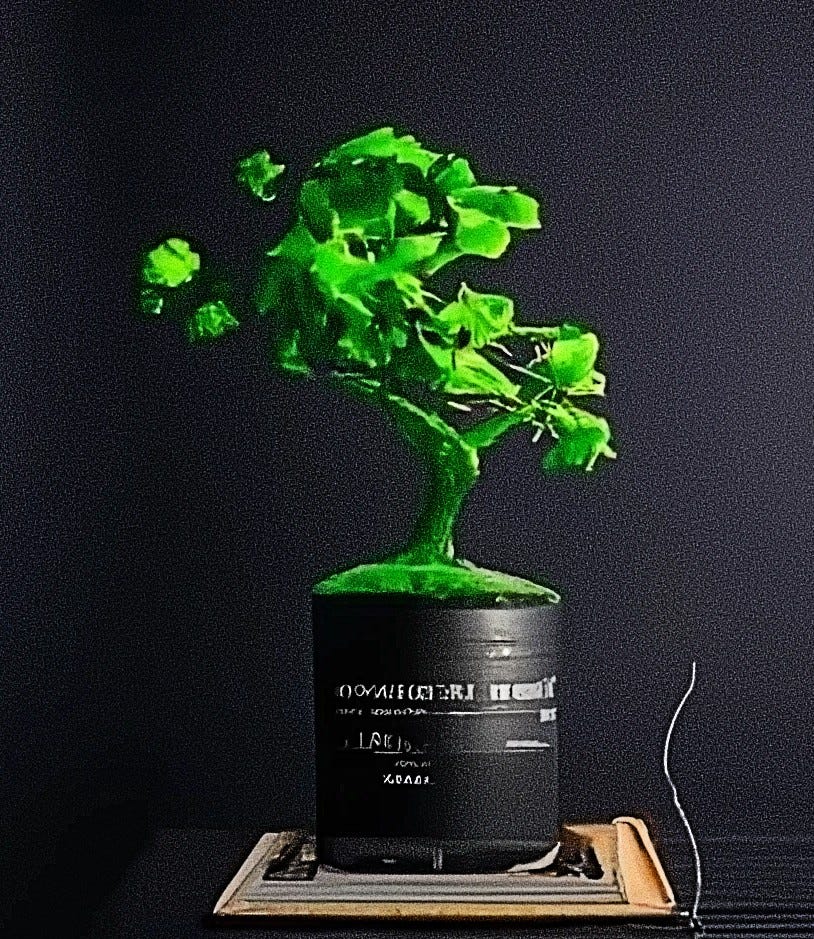Before I was an anonymous lawyer - and in my day-to-day life, a significantly less mysterious litigation partner at a mid-sized firm - I spent a few years doing something a bit different.
Broadly speaking, we, from time to time, looked into things.
Fires, often. Hot (meaning, the scene was still available; although occasionally literally smoldering) and cold (scene unavailable). Our work was the type designed to run in the background, for the most part, so we'd often have to proceed without speaking directly with involved parties.
Public records requests were our bread and butter, as were deeds and titles and corporate filings. Blueprints, specifications, manuals, permits and licenses. Cause and origin reports. Scene photos.
Sometimes, we'd take custody of debris. We had an evidence room.
God, it was fun.
Chaotic, improvisational, impossible. and just so fucking fun.
What I didn't realize then -- and I know now – is that many lawyers are nervous about obtaining information outside the formal, structured, process of discovery.1
Beyond buying a social media report from a vendor, or hiring a private investigator for a bit of surveillance, we like our documents bates-numbered and delivered sixty to ninety days after they were due, our witness testimony delivered haltingly, under oath. Everything buttoned-up, above-board, and fully admissible2 in court.
It’s too bad.
Because formal discovery is necessary, and often even useful, as a means of obtaining evidence admissible at trial, but it can’t substitute for actually doing the work to find out what the fuck is going on.
Hypothetical examples:
A witness claims that she knows when an event happened, because it was the day she took and failed a certain licensing examination. She says she has no documents showing that she took the test that day, but she’s “sure.”
The board who administered the exam provides anonymized lists of takers, locations, and results. Nobody failed at that test location at issue for two years. The witness can be impeached on the stand with these facts.
A manufacturer claims they have no knowledge of any hazard associated with a certain design, and that their document retention policy means they wouldn’t have any records older than three years.
A hobbyist, however, has for reasons known only to him, maintained a website containing .pdfs of every service bulletin issued by the manufacturer for the past thirty years. These bulletins show that not only was the hazard known, but efforts to correct it were abandoned – just about three years ago.
The documents can be authenticated with a request to admit, or at a corporate representative deposition.
In addition to the above – and setting aside that it’s cool and fun and impressive to tell your client things they didn’t already know – being aware of the world of information that exists outside of formal discovery is itself useful.
A witness’ background doesn’t need to be unknown until the moment they’re sworn; the motivations, resources, and intent of involved parties shouldn’t be something learned by implication and inference at a mediation.
As a litigator, I have no idea where transactional lawyers get their facts, if they even use them. I don’t understand corporate practice, and as far as I know mergers and acquisitions are like when a kid will mash two action figures together and say "they're making babies" except with redlines.
Except all the hearsay. Which 90% of it will be, anyway.





So this caught my eye for the exact reason it happens to be literally a thing I do albeit not as often as it could be. There are three major instances where OSINT was a core part of my investigative research for discovery and yes, there were tons of public record requests. More significant was the dot connecting I became aware many litigators do not naturally seem to do. Keeping it to OSINT allowed me to remain safe that I wasn't overstepping anything. When I worked directly alongside an attorney (as I was a core source of best presenting defined elements in her case) I was able to be more in control and aware of how data was likely applied. This resulted in, her words, the initial most damning smoking gun due to a state department's absolute incompetence.
This seemed almost contrary to the next case but I was brought in by the plaintiff having previously assisted them and been of apparent significant help. Their lack of insight into what OSINT could accomplish and what I knew could benefit their case caused likely the most harm. I delivered a very formal sort of report with my findings upwards of 35 pages but so long as I explained to them the sources it wasn't as important to show it in the report. Despite not knowing what OSINT could accomplish I was significantly more limited and unable to make records requests I typically would have. This was a legal team and fell into the lap of an out of state attorney who made it to half the few meetings we had.
I would charge significantly less than a PI who is sticking to OSINT and certainly less than a purchased online report which are more often than not spotty and inaccurate. I really wish I knew how to make this something consistent and usable by attorneys and their clients.
A good read, sadly USA centric but if there only USA based contributers one can expect nothing else. If OSINT is captured forensically,the workflow being screen captured, the end resut being hashed to prove there has been no interference and the continuittty maintained in the chain of custody then I see no reason why this isn't mainstream in the defence case in criminal or civil law. I would demand it if I were falsey accussed of something and the prosecution (i.e police) do this as a matter of routine.